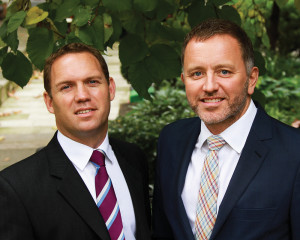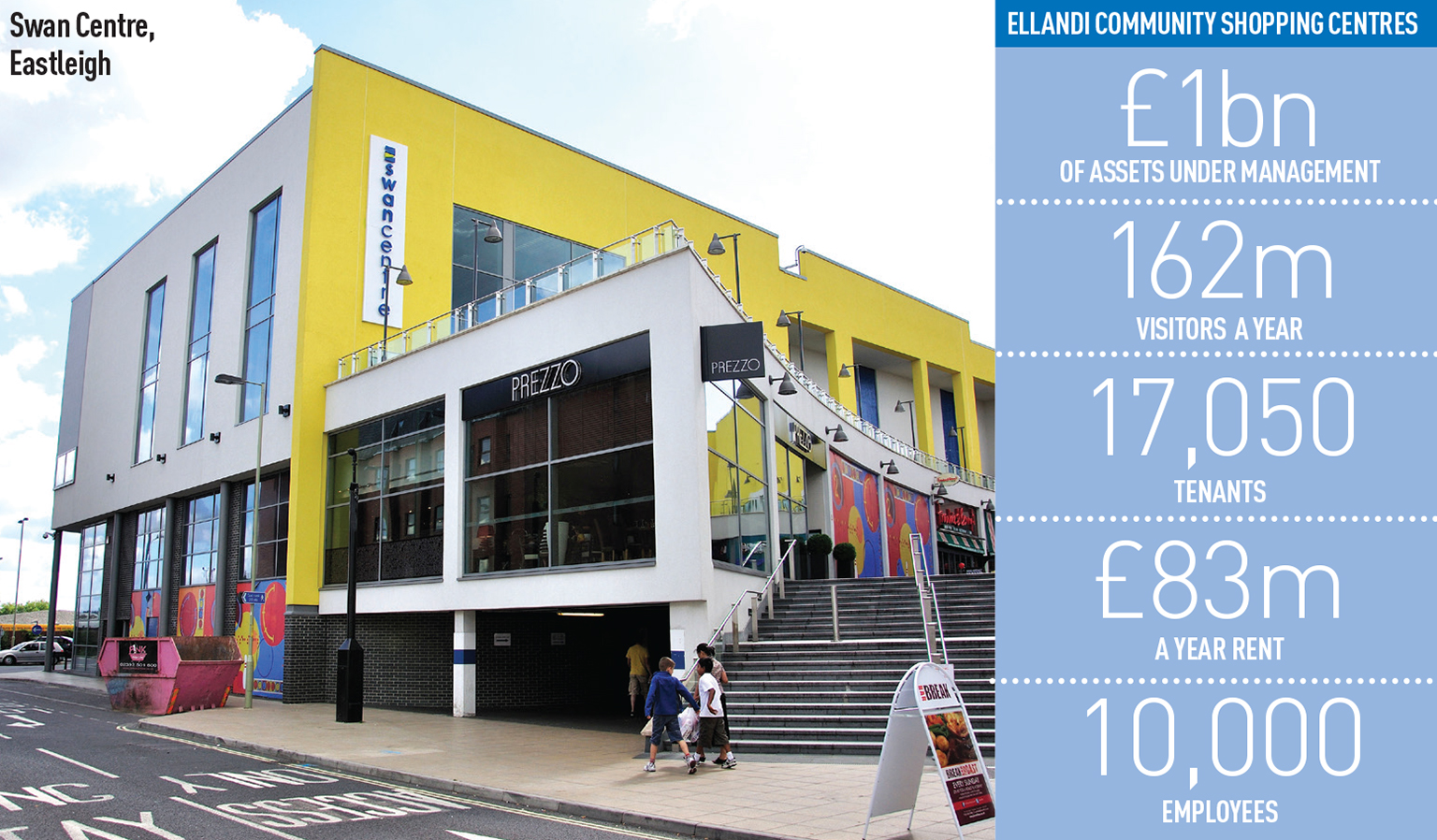
It would be fair to say that the retail sector is having a tough old time right now. The final sinking of the BHS ship this week came among a spate of recent high street demises including fashion brands Austin Reed and Blue Inc. And amid such a struggling, churning market the fear held by many – that the death of the high street really is upon us – has only been compounded.
These recent casualties, coupled with growing concerns over how the EU referendum could impact the market, suggest the sector could be in for a slow and painful future. Investment is scarce, and those that have holdings on the high street are questioning whether to pull the plug. Better to put it out of its misery than to remain faithful to an outdated asset class, right?
Not according to Morgan Garfield and Mark Robinson. While many investors would not touch the high street with a barge pole right now, community shopping centre investor Ellandi’s managing and property directors have been busily investing in exactly that up and down the country.
And we are not talking prime assets. Since inception in 2008 they have been targeting rundown, tertiary local shopping centres that they insist are not only delivering returns, but new community spaces.
It is a risky move, as the pair themselves know all too well. “We’ve been entirely focused on one asset class, which arguably is either a very brave or a very foolish thing to do,” concedes Garfield.
Of course, they hope it is not the latter. And a recent joint venture with impact fund manager Bridges Ventures to focus investment on struggling communities and town centres across the UK does prove there is backing out there. But betting so much on this single asset class takes a lot of faith in such a tough market.
These guys buy shopping centres that no one else wants, spend around £1m turning them around in a couple of years to make them into community centres and then reap the financial and social benefits of their work. It sounds like a tall order, but they insist it works and have managed to convince some of the world’s largest funds, including Lone Star, that they should be investing in them too.
So what do they have to base their punt on? And how did they manage to persuade a globally renowned New York fund that it should be investing in shopping centres in the back end of Scotland?
Misunderstood assets
Community benefits aside, the pull has to come from demonstrating cold, hard returns. “The critical thing, obviously, is that we are making money at the same time,” says Garfield.
There are no obvious reasons Lone Star should want to own a shopping centre in the back end of Scotland, but Ellandi has a convincing sales pitch. Namely, up to 75% returns.
They are convinced UK shopping centres are a misunderstood asset class, particularly when they are caught up in the repeated reports of the death of the high street. Because community shopping centres should be on everyone’s radar. In the UK, 75% of the country goes to their local high street once a week, and 93% go once a month.
“We never bought into the death of the high street thesis. We very much bought into the idea that retail is splitting between high-end leisure shopping for pleasure, shopping for want, and shopping for need, and people have a need for a vibrant town centre to fill all those roles,” says Robinson.
And despite the well-worn depressing narrative, people are still shopping on the high street. This provides the grounds for a defensive business model.
The opportunity is to buy into robust assets that generate good income yields, where there is little competition from other investors and plenty of availability of debt financing. This is where Garfield’s financial background comes into the equation.

He says: “You need an operationally successful story, which community shopping centres are, and then a financially engineered story, which you can do too. You buy these assets off 8%, you put in 60% loan-to-value financing at an all-in cost of 3%. Lo and behold, you’ve suddenly got a double-digit cash yield.
“The assets we bought before Christmas show on average a 9% cash yield to investors. So, they’re getting 75% of their total investment return month-on-month, quarter-on-quarter, from cash flow.”
Three-step process
But there is work to be done before that cash flow comes in. This is where Robinson steps into the frame, by making the assets better places. There are three steps to this process.
The first is making sure the shopping centres are safe, secure and clean. This is the bare minimum that people expect, and many community shopping centres do not fulfil these criteria.
Ellandi’s work at this level has been externally recognised, and it is the only shopping centre owner to have won five Loo of the Year awards for cleanliness.
“That means we’re a Champions League loo provider,” says Robinson. “While it’s funny, it’s important, because it signifies that people should expect their very basic needs to be met in a more than acceptable manner.”
The next stage is the rebranding, repositioning and redevelopment of the shopping centres. These include both material and visible initiatives.
“We’ve resigned and rebranded a large number of the schemes,” says Garfield. We’ve put photovoltaic electricity installations on the roof of probably half the schemes we’ve done. You need new lighting systems, both because it improves the environment but also it’s better in terms of your sustainability and efficiency.”

Another example is Ellandi’s Win a Shop competition, which it has extended to a number of its shopping centres. It allows local entrepreneurs to enter a competition to win a free shop for a year.
“That has a brilliant halo effect,” says Robinson. “It makes people realise that we’re not a typical landlord that sits there and expects people to pay unsustainable rates, or put their house on the line, or do a big rental deposit.”
Once the shopping centres have been improved in this respect, the third step of social improvements to the area and community outreach can begin.
“What we can do is very quickly say, ‘Hey, we’re the new guys, and we are different.’ We do actually, sincerely believe in improving the community,” says Robinson.
Easy to say. But the evidence backs them up too. Examples include financing local park runs for children to get them exercising more, projects for local societies, and helping sports clubs, including supporting a disabled rugby team.
“These are not projects that are going to give any commercial benefit back to the shopping centre – that’s not what it’s about,” says Garfield. “It’s about Ellandi and the shopping centre being identified as a unit that is properly engaged in the local society and is actually trying to work with the local people. Because ultimately those local people are our customers, so we’re trying to give something back and building a mutual respect.”
Sustainability is important. Firstly, for the local community, but it also has financial perks which keep investors happy. Previous sustainability projects at Ellandi shopping centres, including investing in environmentally friendly lighting, have added around 5% to the shopping centres’ value.
Operating offline
Although the company’s business model encompasses two of the biggest growth areas in retail – value and convenience – its plan does not include the third, and often stated as the largest: the internet. The negative rhetoric that surrounds the high street’s demise is often prompted by the threat of online retail, but Robinson says they are not worried about the beast that is e-commerce.

“We think that the sort of shopping our portfolio represents is very insured against the impact of the internet,” he says.
Items that are purchased in Ellandi shopping centres are not things that are often bought online. Given the value of the goods, many retailers would not be able to afford to deliver them and make a margin. But some investors struggle to get their head around this concept.
“When you start explaining why this is an interesting investment class to a fund manager who earns £300,000 a year and lives in Fulham, he’ll say, ‘Surely you get that from Amazon,’” says Garfield.
“If you need a pair of swimming goggles for your son Johnny to go swimming on Saturday, you order them online and it will cost £10 and then £5 for it to be delivered. If an average man on £18,000 a year needs to get little Johnny his goggles for swimming, he pops into Sports Direct and gets a pair for £1.99 on the way to the swimming pool.”
Popping into the shops is still more convenient, and cheaper, for many people.
“One of the reasons that Mark and I have been very comfortable buying local shopping centres in regional towns is that we grew up in nondescript regional towns,” adds Garfield.
And it is this personal experience and understanding of the market that Garfield and Robinson hope will prove that Ellandi’s single asset business strategy is brave, not foolish.
As with other seemingly alternative property investments from the past such as student housing or more recently, collaborative workspace, it is only a matter of time before others want to get into the community shopping centre game too.
But those wanting to get in will have to act fast, because Ellandi has made its mark, and most town centres are not big enough for two community heroes.
To send feedback, email amber.rolt@estatesgazette.com or tweet @amberrolt or @estatesgazette











